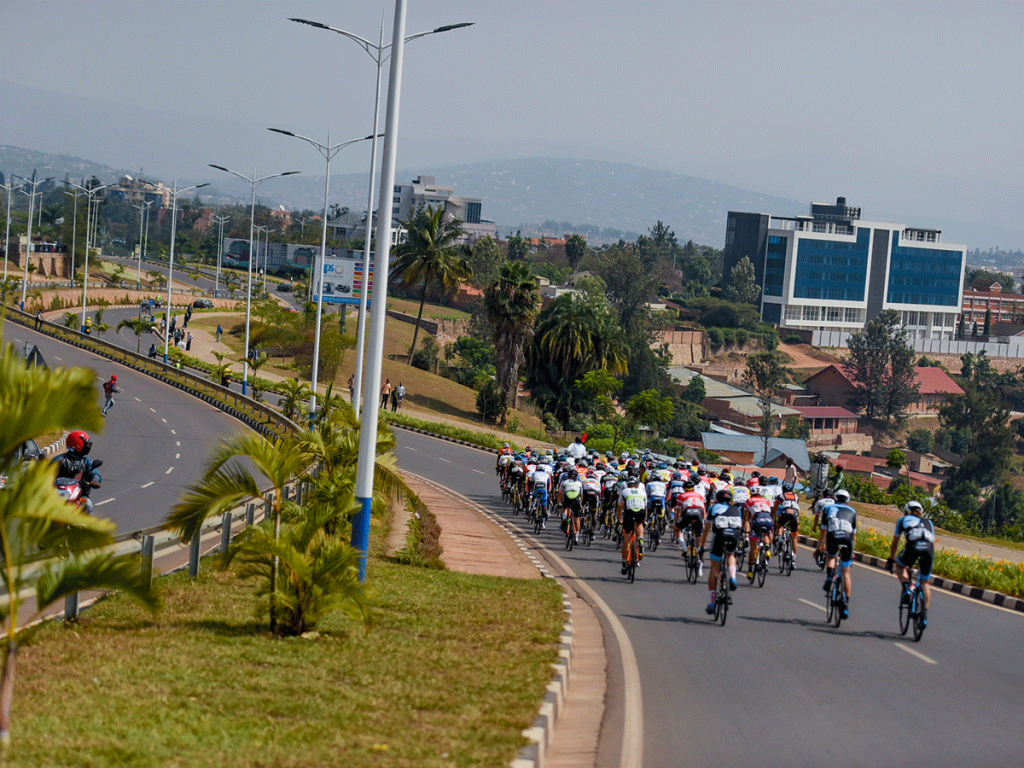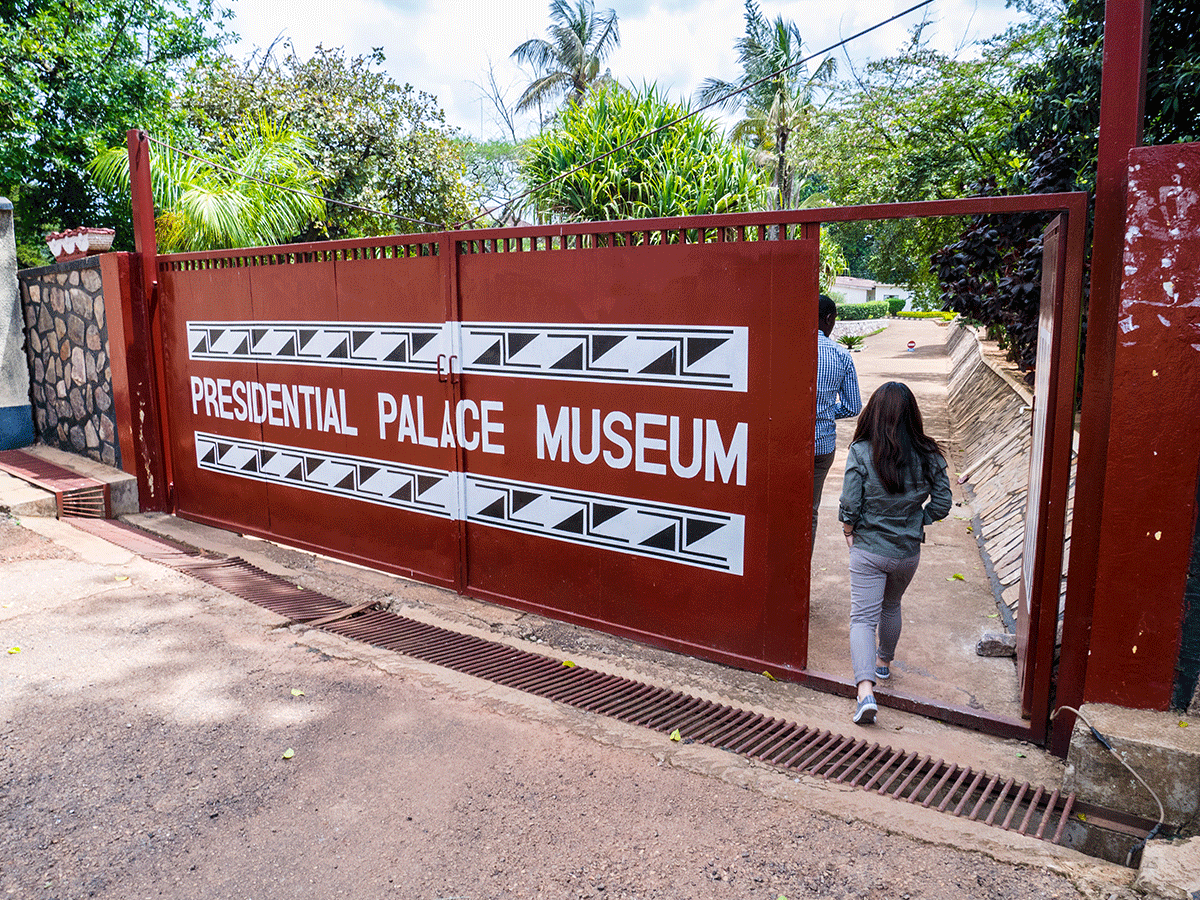Gishwati Mukura National Park Rwanda

Gishwati Mukura National Park Rwanda
Rwanda’s fourth national park, Gishwati Mukura is made up of two separate forests – the larger Gishwati and small Mukura, forming a total of 34 square kilometres plus a buffer zone. The forests sit on the ridge which divides the Congo and Nile water catchment areas, along with the incredible biodiverse Albertine Rift in the west of the country. It is made up of 60 species of trees, including indigenous hardwoods and bamboo.
Gishwati is home to a group of 20 chimpanzees that live alongside golden monkeys, L’Hoest, and Blue Monkeys. Birds are well represented too, 232 species have been seen at Gishwati and 163 at Mukura, among them Albertine Rift Endemic species and forest specialists.
The park is currently part of an ambitious landscape restoration program. Activities in the park are due to begin in 2019 and include a guided nature hike, guided chimp, and monkey tracking, bird watching, and a visit to the waterfalls.
The area was nearly depleted largely due to resettlement, illegal mining in the mineral-rich forest, and livestock farming.
The formalization of its National Park status in 2015 aims to help redress the balance, to increase the number of trees to improve soil fertility, stabilize slopes and regulate streamflow.
It will also contribute to improving the livelihoods of the population living in the surrounding areas, which in turn offers the forest a better chance of regeneration in tandem with the potential to raise living standards in the longer term.
According to UNEP, the reserve’s forests were largely intact in 1978, and substantial forest cover still remained in 1986. But in the 15 years that elapsed between these images—a time that spanned the country’s tragic genocide—wave after wave of refugees arrived in Gishwati Forest and began clearing it, often for subsistence farming. By 2001, only a small circular patch of native forest remained—1,500 acres of the forest’s original 250,000.
Large tea estates occupy the central and northern parts of the reserve. The tea-growing areas are lighter green, and the dark green patches are probably plantations of eucalyptus or pine trees. (The wood boilers that produce the heat for drying tea consume huge amounts of firewood.)
Community-based activities include a farm stay, a live cultural dance, making handicrafts, beekeeping, a tea plantation tour, and the chance to learn from traditional healers, who use natural plants to support modern medicine and synthesized drugs.
Size of Gishwati Mukura National Park
Gishwati-Mukura National Park (GMNP) expands on 35.58 km² in the Rutsiro and Ngororero Districts of Western Province. Its hilly landscape gives a wonderful lateral and top view. GMNP is one of the few remaining natural forests and biodiversity hotspots in the Congo-Nile Divide within the Albertine Rift Region.
Location of Gishwati Mukura National Park
Gishwati Forest Reserve is a protected reserve in the north-western part of Rwanda, not far from Lake Kivu. The reserve’s forests were largely intact in 1978, and substantial forest cover still remained in 1986.
The national park is centred between Rwanda’s three tourism hubs of Nyungwe Forest National Park, Lake Kivu Belt, and the Volcanoes National Park which is famous for gorilla tracking safaris, travellers driving from Nyungwe will have stunning views of the forest and Lake Kivu plus the abundant tea leaves that surround the national park
How to get to Gishwati Mukura National Park
Getting to Gishwati Mukura is easily accessible via Kigali-Musanze –Gisenyi Road which is a four-hour drive from Kigali.
Clients are advised to hire an experienced local driver as the country is very difficult for self-drive clients with the thousands of rolling hills and very strict traffic laws it’s much better to hire a local guide or driver.
Most travellers are advised to stay in Karongi or Gisenyi as there are no available accommodation facilities in the area in order to access the national park easily.
Things to do in Gishwati Mukura National Park
Gishwati Mukura is expected to be one of the best national parks once the tourism development projects are completed in the area, with its strategic location the national park is expected to attract many tourists with a variety of activities expected to be easier like trekking as the forest is smaller in size, below are some of the activities expected in the national park once it’s open.
Chimpanzee Tracking
Gishwati is home to over 20 chimpanzees that are residents of the area and they are under habituation by the Rwanda Development Board after the process is done the chimpanzees will be open to tourists for tracking, being a smaller national park finding the chimpanzees will be easier hence expecting fabulous tracking experiences.
Golden Monkey Tracking
The number of golden monkeys in the Gishwati Mukura National Park is not known but the droops have been seen jumping around the forest branches once the habituation process commences the golden monkey activity will be open for tourism and clients will be able to trek the golden monkeys.
Primate and guided nature walks
The national park has several other species of monkeys in the forest which can be seen by clients during nature walks, several bird species can be recorded alongside butterflies, beautiful trees, and many other attractive forest flowers.
Community walks and experiences
The communities around the park have put together several activities like Farm stays with the locals, fantastic cultural dances, basket weaving, beekeeping, and the traditional healer which the clients can now participate in while visiting the national park.
Birding trips
The national park’s location near the Congo bio-zone has made it a superb birding destination with over 232 bird species recorded including the Rwenzori turaco and the regal sunbird which are Albertine rift endemic, however, clients are expected to travel to this area with a highly experienced birding guide in order to have the best experience.
Waterfall walks
The park is an important origin for freshwater in the Gishwati Mukura area due to the hilly location there are beautiful drops of water forming the perfect forest green waterfalls in the area, and tourists can take a walk to explore the beauty of the forest.
When to visit Gishwati Mukura National Park
Gishwati Mukura can be accessed all year round for birding clients however those who are keen on primate safaris should consider visiting in the dry season which usually starts from mid-May up to early September and also from December to February.
Also towards the end of the rainy season are the best months to trek chimpanzees as the fruits start to ripen providing enough food for the chimpanzees making it much easier to find them.
Where to stay in Gishwati Mukura National Park
Being a new National Park; a few accommodation facilities have been established within and near Gishwati-Mukura National Park. The best facility so far to have an overnight stay is Gishwati Lodge which is a great dwelling to combine adventure, luxury, and conservation while on a visit to Gishwati-Mukura National Park. It is a luxurious lodge with great views of the beautiful landscape of the park; also, activities like chimpanzee tracking, nature walks, photography, and bird watching can be well enjoyed by visitors staying at the lodge.
CALL OR EMAIL
ENDLESS PLAINS AFRICA LIMITED
Africa: +256706522669
Overseas: +61427412130
safaris@endlessplainsafrica.com
a travel agent is available 24hrs
What our guests say about us…
START PLANNING YOUR SAFARI NOW!
Talk to one of our African adventure experts and let them tailor-make your safari
Inspirational journeys









